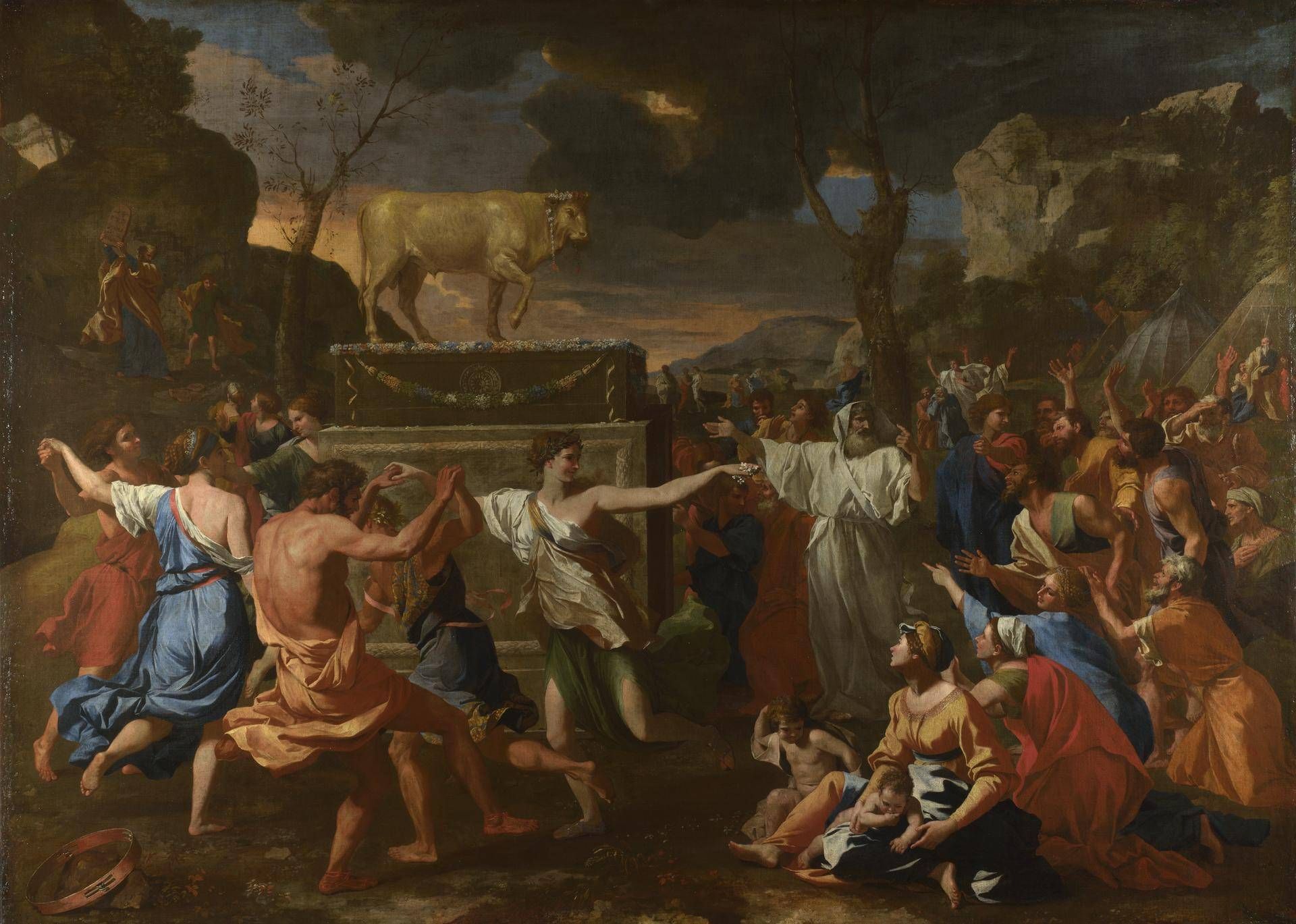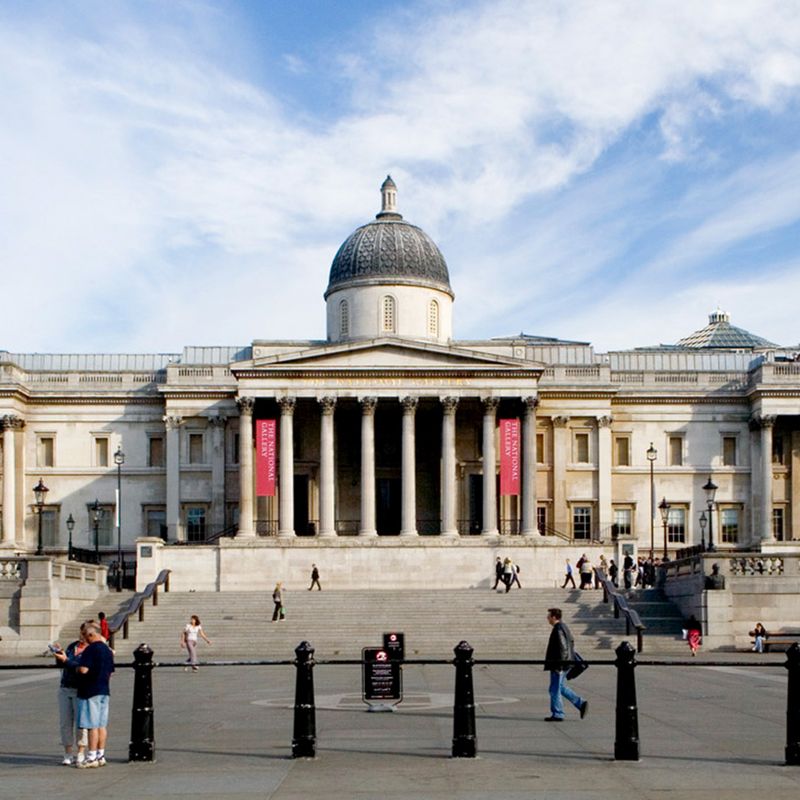
The Adoration of the Golden Calf
A large gathering of Israelites worship a life-size statue of a golden calf, or what is actually a golden bull, that represents the Egyptian bull-god Apis. They have decided to worship a different, pagan god while their leader Moses has been away on Mount Sinai collecting the stone tablets on which God has written the Ten Commandments, his laws on how to live properly.
Aaron, dressed here in a white cloak, has melted down gold earrings to create the statue. In the top left corner, Moses returns with his successor Joshua, and in his anger at seeing the calf smashes the stone tablets (Exodus 32: 19).
The worshippers dance energetically and we follow their pointed hands across the canvas, which helps to tell the story. Our eye is drawn to the group of kneeling figures on the right, who gaze and point towards the altar, and to the group of dancers on the left with Moses behind them. These two groups are connected by the dancing girl who links hands with another dancer and holds a small bunch of white flowers. The group of tents on the right show that worshippers have travelled a long way to reach this shrine. Several people in the middle distance look in shock at what Moses is doing. A bright light shines onto the scene from our direction; an elderly man in front of the tents shields his eyes.
This picture shows Poussin's interest in classical antiquity: the muscular physique of the worshippers, the flowing drapery and frieze-like arrangement of the dancers are inspired by antique sculpture. Groups of dancers at pagan festivals are often found on ancient Greek vases. The boldly coloured clothing and golden sky reflect the influence of sixteenth-century Venetian painters such as Titian and Bellini. Poussin spent his time in Italy studying both classical art and more recent works.
The positions of Moses and Joshua and the people in the foreground is similar to a fresco of the same subject painted by Raphael and his studio in around 1518/19 for the loggia (open-sided gallery or room) of the Papal Palace in the Vatican. Poussin shows this group of people in reverse in his earlier scene of pagan celebration, A Bacchanalian Revel before a Term, which we also own.
This painting's companion The Crossing of the Red Sea is in The National Gallery of Victoria, Melbourne.
Credit: Bought with a contribution from the Art Fund, 1945
1633-4
Oil on canvas
153.4 x 211.8 cm
NG5597
Image and text © The National Gallery, London, 2025
Where you'll find this

National Gallery
Permanent collection





